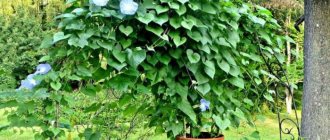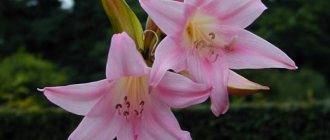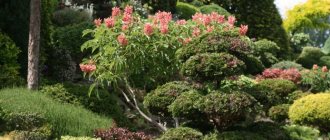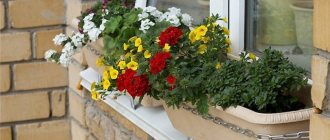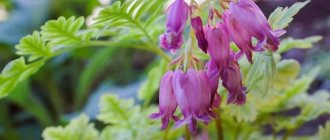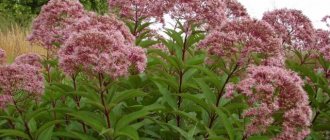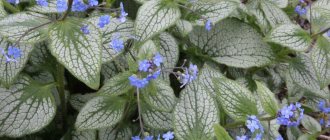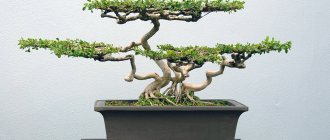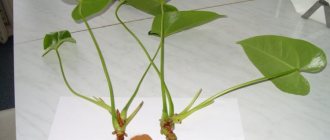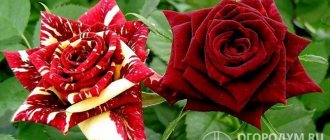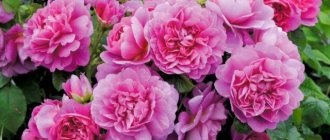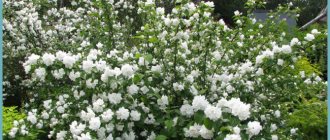Story
The original idea to create a Japanese bonsai tree belongs to China. It was there that the unusual art of “Penjing” was born. There is a long-standing legend that a certain ruler wanted a small empire that would have trees, mountains, and rivers. When the subordinates began to carry out the order, they liked the potted trees so much that they decided to create copies and keep them.
It is not known for certain whether this is true or not, but there are obvious facts: Buddhist monks were the first to use the home bonsai tree. Later they were used during ceremonies.
Crown formation rules
To reduce the size of a plant, you can use various methods:
- Seasonal pruning, which is the key to success when growing, but it must be done correctly, otherwise the plant will die.
- Direction of growth of branches and trunk using copper or aluminum wire.
- Creating the illusion of an old tree. To do this, remove the bark from the trunk of a living tree. But this must be done extremely carefully so as not to destroy the plant.
Pruning is the main method of crown formation. It allows you to reduce the size of the tree, shape the location of the main branches, and also stimulate the growth of young shoots. But during such events, the bonsai experiences great stress, so manipulations can only be carried out on healthy and strong specimens.
Several types of pruning are used when forming bonsai:
- shaping, when large branches are cut out and the trunk is truncated, creating the shape of the future plant
- shortening branches, which allows you to increase volume and give a neat look
- light cutting of young shoots
- pinching to limit growth
- pruning of roots - for the growth of new root mass
Moreover, pruning of roots and crowns should be proportional and balanced.
How to identify a tree?
There are several signs:
- Pronounced root system.
- Clear branches, the course of which can be followed.
- The trunk can be seen even through the foliage.
- Similarity to the original tree.
Symbolism
Previously, it was believed that every person who managed to grow a tree could be considered a god. This is easily explained by their religion: in the Buddhist view, the whole world is an evergreen garden, and God is the gardener.
And of course, you shouldn’t immediately count on success in such a complex matter. Some try to grow it for years, constantly watching and caring for it. It symbolizes:
- Justice.
- Goodwill.
- Wisdom.
- Delicacy.
- Excerpt.
Basically, types of bonsai are distributed according to the seasons in which they bloom: spring, summer, autumn, or having an attractive appearance throughout the year.
Top Ten Greatest Bonsai Trees
Although the cultivation of bonsai as a hobby is now common throughout the world, its Asian origin is not disputed by anyone. It is not surprising, therefore, that the most impressive trees are in the collections of famous Japanese masters.
In this section we have brought together ten magnificent trees - unique in their beauty, balance and realism. These trees will help you properly appreciate this ancient and fascinating art! The order in which these ten trees are presented has nothing to do with their significance.
(#1) 800 year old bonsai from Mr. Kunyo Kobayashi's Shunka-en nursery
A remarkable tree, famous for its extremely old age. It is believed to be over 800 years old and is one of the most expensive in the world. Its owner, Master Kobayashi, is one of the most famous bonsai artists in the world, having received the prestigious Japanese Prime Minister's Award four times. His nursery, Shunka-en, is located in Tokyo and is open to the public.
(#2) Goshin ("Spirit Protector") by John Naka
Goshin ("Spirit Protector") is a bonsai created by John Y. Naka. This is a composition in the form of a grove of eleven Chinese junipers (subspecies Foemina), the oldest of which Naka began to form back in 1948. In 1984, Naka donated this composition to the National Bonsai Foundation with the condition that it would be exhibited at the US National Botanical Garden (Washington), where it remains to this day.
(#3) Small bonsai (shohin), by Morten Ahlbeck
Magnificent cotoneaster horizontalis (Cotoneaster horisontalis). This photo was taken in spring. The tree blooms in summer and is decorated with small red berries in autumn and winter. The height of this bonsai is only 9.5 cm and it is planted on a miniature rock. The author of the container is the famous master John Pitt. At the time of this photo, the tree was about 20 years old and took approximately ten years to form.
(#4) Scots pine (Pinus silvestris), by Stefano Frisoni
This tree is amazingly realistic, which is highly valued in bonsai. As you can see, the crown fragments are very dense and resemble clouds in the sky!
(#5) Landscape in Chinese style, Penqing Yi-Sun Wu
This is a wonderful Chinese landscape from the Man Lung collection (Hong Kong), in which Sageretia theezans are used, together forming a very realistic landscape (Ficus bonsai are also widely represented in this collection). This composition, including trees, rocks and miniature figurines, is placed in a flat rectangular marble tray, which, in turn, stands on an antique table.
(#6) Blooming Bonsai by Wolfgang Putz
This tree is an azalea, only 14 cm tall. The photo was taken in late spring - early summer, when azaleas bloom (not for long, but very brightly). The tree is planted in a Japanese container. We also have a section on our website with the 10 best flowering bonsai.
(#7) Brazilian Rain Tree by Badi Sulistyo
This tree was grown from a small cutting and this photo shows the result of 12 years of work. Native to Central and South America, the Brazilian rain tree is considered one of the most beautiful tropical trees. It is very popular in bonsai.
(#8) Mini bonsai composition (for mom), by Morten Ahlbeck
A bonsai arrangement (in this case, a small mame size) usually consists of a main tree, a scenic scroll and an accent plant. Together, these objects create a strong image, often reflecting the beauty of the current season. Check out more pictures of small bonsai.
(#9) Walter Poll's famous bonsai - Japanese maple (Acer palmate)
One of the most famous trees from the collection of European bonsai artist Walter Poll. This tree is incredibly graceful and realistic, large in size (almost a meter in height, the maximum for a bonsai) and more than a hundred years old. Without a doubt, this is a masterpiece created by an inspired artist! A photo of this tree is posted in our bonsai gallery.
(#10) Bonsai Master Kimura
And last but not least is the bonsai of Sensei Kimura. His collection of various trees is world famous. Beginning his training at age 15, Kimura was an apprentice to Master Hamano in the bonsai village of Omiya. To see his captivating and sometimes unconventional works, we recommend you visit Master Kimura's bonsai garden!
What plants are suitable for growing in our climate?
Many people wonder: how to grow a bonsai tree at home? And there is no definite answer to it. The only thing worth remembering is that this tree cannot be in the room. It is not suitable for home conditions. But outside, with protection from rain and wind, it’s calm. And now you will find out how.
First, you need to decide what kind of bonsai tree seeds you want to grow. Perfect for Russia: juniper, pine, spruce, thuja, lilac, cherry, apple, pear, larch, barberry, maple, viburnum.
The most popular are olive, tea tree, elm or a combination. Regular deep containers are suitable for them.
Syzygium paniculata
One of the most beautiful and densely growing evergreen giant trees, syzygium (Syzygium paniculatum) in bonsai form offers an idealized, flawless miniature tree.
The natural density allows you to keep pruning to a minimum, and the fragrant flowering and fruiting of syzygium is a pleasant bonus. Syzygiums can be used for living rooms, and for winter gardens or staircases.
Syzygiums are evergreen trees with lanceolate or elliptical, surprisingly simple and beautiful leaves that amaze with the color of their bark. Young shoots of the plant are copper, glossy, gradually repainted to match the tone of the trunk and old shoots - matte beige-brown, easily recognizable against the background of any other indoor bonsai.
Syzygium shoots are densely leafy, which creates the feeling of a fairly massive crown. But the most amazing thing Syzygiums prepare for the beginning of summer: in June, fragrant, unusually “fluffy” flowers with long stamens in inflorescence-tufts bloom on tiny bonsai from 15 to 50 cm in height, and then purple or pink fruits are set on them.
For syzygium, the most important thing is bright lighting. This plant will need it not only during the warm period, but also in winter. Syzygiums require frequent ventilation and exposure to fresh air from April to October. Otherwise, the requirements for stable substrate humidity and at least average air humidity are no different from other indoor bonsai.
The formation of syzygium is tolerated very well. But pruning can be done at any time, except for the period from April until the end of fruiting. These bonsai, once initially formed, are often grown with minimal pruning as the plant bushes on its own.
Syzygium prefers to overwinter in cool conditions. Comfortable temperature range is from 10 to 13 degrees. But there is one significant “but” in this rule: syzygiums tolerate winter quite well even at normal room temperatures, if only they are provided with bright lighting.
How to grow?
Be prepared to take care of your plant for several years. First for the seed, then for the sprout and finally for the tree.
To get started, you will need a special kit consisting of:
- Instructions.
- Ground.
- Pot.
- Semyon.
- Fertilizers.
Over the long term you will need:
- Trim the plant.
- Maintain soil in favorable condition.
- Maintain temperature (10-18 degrees).
- Avoid exposure to sunlight.
- Prevent drafts.
- Water the plant on time.
Periodically, nitrogen, phosphorus and potassium must be added to the fertilizer. And be patient.
Zanthoxylum
This plant is also known to us as yellowwood and pepper tree, although the fragrant leaves of the plant do not smell like pepper, but like lemon, since zanthoxylums are relatives of citrus fruits. It is this crop that brings the harvest of the legendary Sichuan pepper.
Zanthoxylum is often viewed as a plant for greenhouses only, but in fact, it is one of the most unpretentious types of indoor bonsai.
Pepper tree is an evergreen tree and shrub, most often grown in bonsai as a tree with a single trunk. The plant is characterized by beautiful, dark bark with an unusual golden-grayish tint and a very dense large-leaved crown.
The feathery leaves of Zanthoxylum, which emit a pleasant lemon aroma when touched, are dark green in color and can reach a record length of 15 cm for a bonsai. Zanthoxylum blooms from April to June. The plant produces dioecious golden flowers in small panicles of inflorescences.
For bonsai, you need to ensure stable soil moisture by watering frequently, but with a small amount of water. Rainwater is more suitable for zanthoxylum. When choosing conditions, it is worth focusing on the brightest window sills - sunny places, regardless of the time of year. Zanthoxylum should be protected from exposure to air conditioners or heating devices. The plant does not have to be taken out into the fresh air for the summer.
The formation of zanthoxylum must be carried out constantly, pruning young branches to create the desired silhouette. If the plant has been shaped to a certain shape, then the young shoots are cut back to their original contours, preventing them from growing in length.
In winter, zanthoxylums are kept cool, but the plant cannot tolerate temperatures dropping below 10 degrees Celsius. The optimal temperature value is from 12 to 15 degrees.
